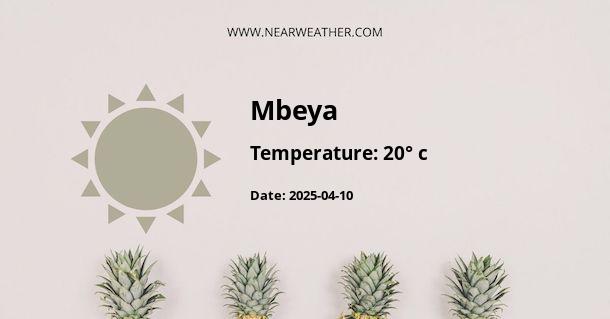Overview of Mbeya Region
Mbeya Region is one of Tanzania's 31 administrative regions. Located in the country's southwest, it borders Malawi and Zambia to the south. The regional capital is the city of Mbeya. The region's geographical and climatic diversity makes it a unique location in Tanzania. This piece provides a detailed analysis of the climate and weather patterns of the Mbeya Region, highlighting key weather elements such as temperature, rainfall, and humidity.
Climate of Mbeya Region
The Mbeya Region is characterized by a tropical highland climate, owing to its location on an elevated plateau. The region experiences significant rainfall throughout the year, even during the driest months, classifying its climate as Af according to the Köppen-Geiger climate classification.
Temperature
The average annual temperature in the Mbeya Region is around 20.2°C (68.4°F). The region's temperatures are relatively constant throughout the year, with slight variations between the warmest and coolest months.
"The warmest month in the Mbeya Region is December, with average temperatures around 21.1°C (69.98°F), while the coolest month is July, with average temperatures around 18.9°C (66.02°F)."
Rainfall
The region experiences a significant amount of rainfall throughout the year. The annual rainfall average is approximately 1000 mm. This rainfall is fairly evenly distributed throughout the year, contributing to the region's lush vegetation and agricultural potential.
"The wettest month is March, with an average rainfall of about 183 mm, while the driest month is July, with an average rainfall of about 2 mm."
Humidity
Humidity in the Mbeya Region varies throughout the year. On average, the region experiences moderate humidity levels, making the climate comfortable for residents and visitors alike.
Weather Patterns Throughout the Year
The weather in the Mbeya Region is categorized by two major seasons - the dry season and the wet season.
The Dry Season
The dry season typically runs from May to October. During this period, the region experiences lower rainfall levels, particularly in July and August. While the temperature remains relatively constant, the humidity levels dip during this period, making it an ideal time for outdoor activities and tourism.
The Wet Season
The wet season spans from November to April. During these months, the region experiences its highest rainfall levels, with the peak being in March. The temperatures during the wet season are slightly higher, and the humidity levels increase, leading to a lush, green landscape.
Final Thoughts
Overall, the Mbeya Region's climate is a tropical highland climate, characterized by significant rainfall throughout the year and relatively stable temperatures. This climate, coupled with the region's rich soil, makes it ideal for agriculture, particularly the cultivation of crops such as coffee, tea, and various types of vegetables and fruits.
Whether you're a resident, a farmer, a tourist, or a researcher, understanding the region's climate and weather patterns can help you plan adequately for your activities in the region.
The data provided in this analysis is subject to change as climate change continues to impact weather patterns globally. Therefore, it's always a good idea to check the latest weather updates when planning a visit to the Mbeya Region.
The Mbeya Region, with its unique climate and weather patterns, truly is a remarkable location in Tanzania, offering a blend of opportunities for agriculture, tourism, and research.
A - Mbeya's Latitude is -8.500000 & Longitude is 33.000000.
A - Weather in Mbeya is 20° today.
A - Climate Conditions in Mbeya shows moderate rain today.
A - Humidity in Mbeya is 97% today.
A - Wind speed in Mbeya is 6.41 km/h, flowing at 92° wind direction. today.
